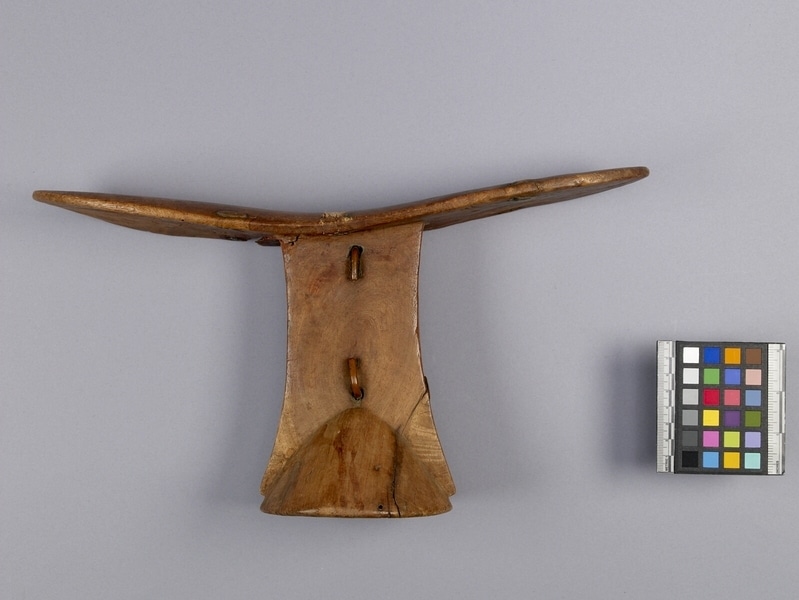Stool Item Number: Aj130 a-b from the MOA: University of British Columbia


Description
Stool carved from single piece of wood; seat is oblong with pointed ends, and is widest near the ends and narrower at the center with a slight dip towards the centre. The base is a hollowed-out, conical shape, which then extends into a relatively flat stem with slightly curved sides. Several copper staples overall. A curved, copper handle made of a thick wire with ends inserted through two holes in the stem and bent back to secure the handle. Slightly polished finish. Part a: base and part of seat. Part b: seat fragment.
History Of Use
Stools are considered private and personal property of the owner and are part of a man's accessories. Each man carries his stool in accordance with the rules of the tribe, for the number of legs indicates his age group (only elders are entitled to a three-legged stool). Stools are awarded to a man when he achieves the second highest rank, and he will retain it for the rest of his life. After his death, it is inherited by the next new initiate who is related to him. They serve as seats when resting, eating, or watching dance performances. Also serve as accessories at ceremonies.
Narrative
Stools are made by men from a single piece of wood using a short-handled axe. They are finished off by sanding with an abrasive leaf and oiled down with butterfat.
Item History
- Made in Uganda ? before 1952
- Collected during 1952
- Owned by Eleanore C. Treutle Stephens before February 28, 1983
- Received from Eleanore C. Treutle Stephens (Donor) on February 28, 1983
What
- Name
- Stool
- Identification Number
- Aj130 a-b
- Type of Item
- stool
- Material
- goat butter fat, copper metal and wood
- Manufacturing Technique
- carved, pierced, oiled and sanded
- Overall
- height 20.7 cm, width 39.0 cm, depth 11.0 cm
Who
- Culture
- Karamojong
- Previous Owner
- Eleanore C. Treutle Stephens
- Received from
- Eleanore C. Treutle Stephens (Donor)
Where
- Holding Institution
- MOA: University of British Columbia
- Made in
- Uganda ?
When
- Creation Date
- before 1952
- Collection Date
- during 1952
- Ownership Date
- before February 28, 1983
- Acquisition Date
- on February 28, 1983
Other
- Condition
- poor
- Accession Number
- 0884/0001 a-b